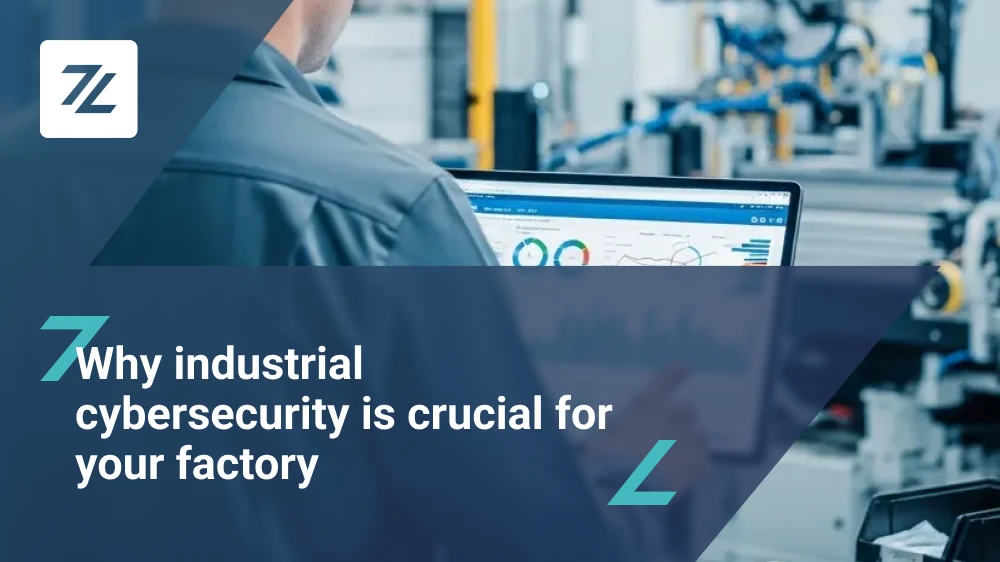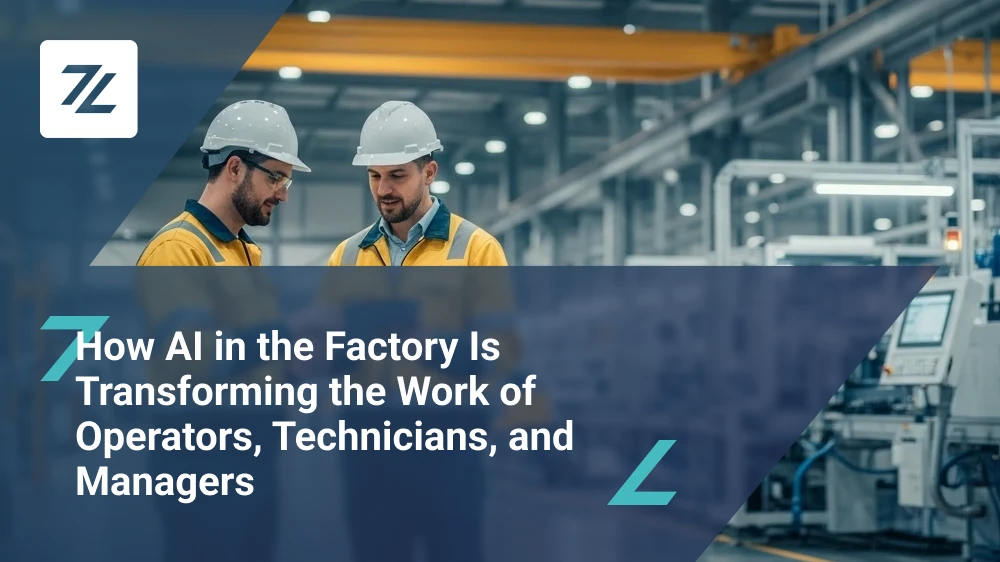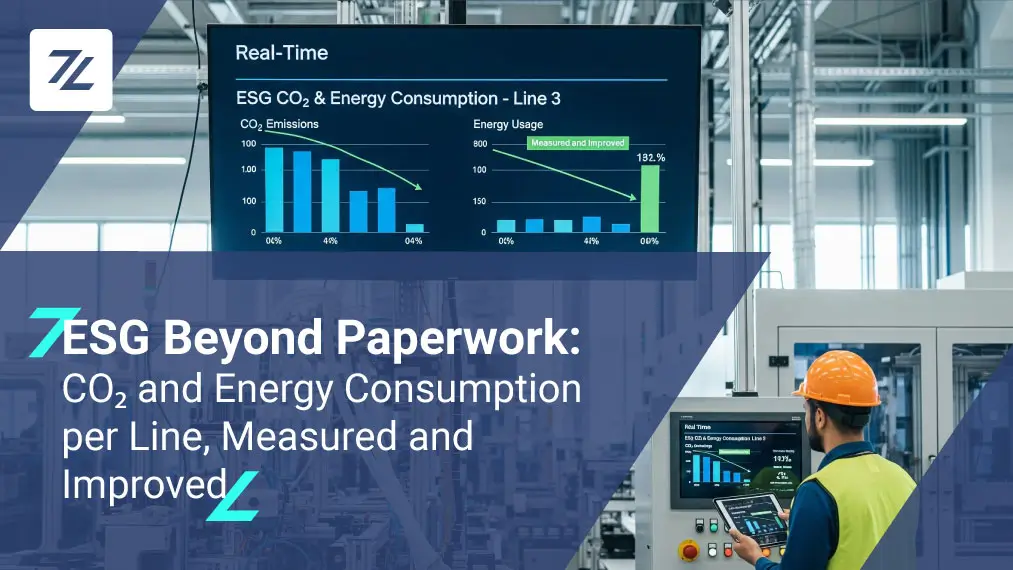The European manufacturing industry is on the brink of a new revolution: artificial intelligence is no longer a promise but a real driver of growth, resilience, and competitiveness.
In 2026, AI becomes an integral part of industrial strategies. Italian and European companies will no longer see it as an isolated optimization tool, but as a pillar of digital and production transformation.
From Automated to Intelligent Factories
Today’s industrial landscape is complex: high energy costs, fragmented supply chains, sustainability pressures, and the need for greater productivity.
In this context, artificial intelligence in the manufacturing industry becomes the engine of a profound transformation — not only technological, but also cultural.
AI is the key to making factories adaptive, capable of learning, optimizing, and reacting in real time.
The transformation is clear: we are moving from routine automation to predictive decision-making, from simple data collection to contextual analysis, from energy efficiency to the hyper-personalization of products.
The year 2026 marks a turning point: technologies are mature, incentives are active, and the European regulatory framework is favorable (AI Act, Industry 5.0 Transition). However, success requires method, governance, and strategic vision to bring AI from slides to production lines.
This shift represents the natural evolution toward Industry 5.0 manufacturing, where industrial AI enables continuous, data-driven production optimization.
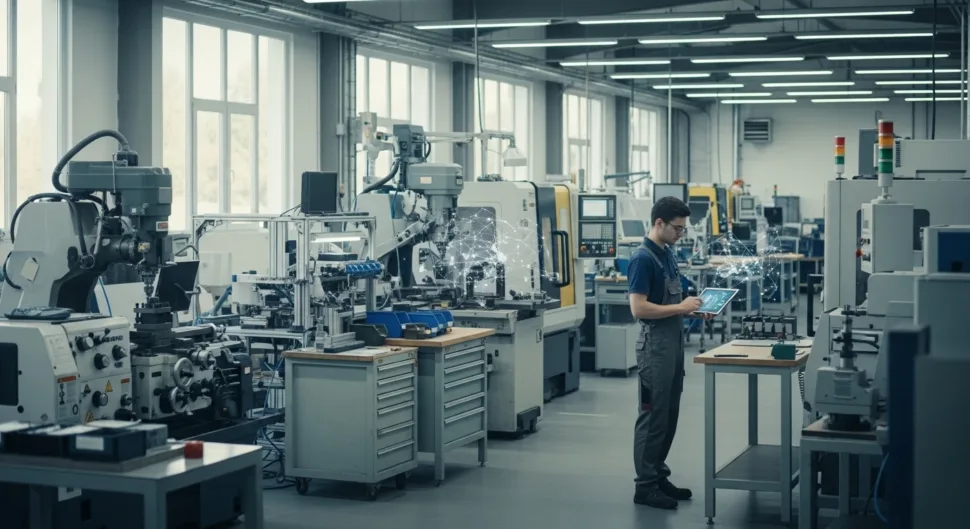
AI as an Essential Growth Engine
According to recent data from Statista, the European artificial intelligence market is worth around $66 billion, with an expected annual growth rate of over 30% through 2030.
In the manufacturing sector alone, the “AI in Manufacturing” segment is expected to grow between 30% and 40% per year (Markets and Markets).
At the same time, a European survey reveals that only 5% of companies have fully integrated AI into their operations — a clear sign of untapped potential.
In Italy, things are evolving rapidly. The report “Artificial Intelligence for the Italian System – 2025” identifies over 240 real-world use cases across more than 70 manufacturing companies, especially in the mechanical, electronic, and electrotechnical sectors. The Italian AI market exceeded €1.2 billion in 2024, a 58% increase from the previous year.
This growth confirms the central role of artificial intelligence in manufacturing as a key driver for digital transformation and production process optimization.
Practical Applications of AI in Smart Manufacturing and Production Optimization
The real value of AI emerges when technologies are integrated into key processes: production, maintenance, energy, and supply chain. Its impact is measured not only in efficiency, but also in agility and decision-making capability.
| Application Area | AI Evolution | Strategic Impact |
|---|---|---|
| Production | Real-time analysis of machine and sensor data | Optimized cycle times, reduced waste, improved OEE |
| Maintenance | Fault prediction and automated scheduling | Fewer downtimes, higher equipment availability |
| Energy | Consumption monitoring and predictive demand analysis | Energy efficiency, lower costs, and reduced CO2 |
| Quality & Control | Computer vision and pattern analysis | Fewer defects, higher standardization |
| Supply Chain | Predictive models for demand and supply | Improved resilience and production capacity management |
The Operational Challenges of Industrial AI
Despite technological maturity, many companies still face structural barriers to adoption. Fragmented data, unconnected machines, outdated infrastructure, and lack of skills remain the most common issues.
A major obstacle is data quality. Without reliable, integrated data, AI cannot generate value. A solid industrial data governance process is essential: defining who collects what, where data is stored, how it is integrated, and how it is protected.
Another challenge is bridging the gap between OT (Operations Technology) and IT (Information Technology) — two worlds that must communicate seamlessly for real-time analytics.
The third barrier is the human factor: many companies lack professionals capable of combining engineering, process, and data analysis skills.
Finally, scalability: too many projects remain stuck in the pilot phase. To move forward, companies need a clear roadmap with measurable goals, training, and change management.
Measuring the ROI of AI and the Industry 5.0 Transition
Measuring the return on investment (ROI) is essential to assess the impact of artificial intelligence in Industry 5.0 and production optimization projects. By integrating AI into Industry 5.0 initiatives, companies can directly link data, actions, and incentives — turning regulatory compliance into a competitive advantage.
| Indicator | Measurement | Benefit |
|---|---|---|
| OEE (Overall Equipment Effectiveness) | Performance, quality, and machine availability | +10-30% productivity increase |
| Downtime reduction | Decreased unplanned stops via predictive maintenance | 20-40% lower maintenance costs |
| Energy cost per produced unit | Real-time kWh monitoring per product | Up to -25% energy costs |
| CO2 Emissions avoided | Energy balance and consumption reduction | Automatic ESG reporting for 5.0 tax credits |
| Decision Lead Time | Average time to solve anomalies or adjust production | Reduced by up to 60% with proactive AI |
Agility, Resilience, and Reshoring: AI as a Strategic Enabler
The 2026 industrial context will be marked by geopolitical uncertainty, volatile energy costs, and fragile logistics.
45% of global decision-makers are already pursuing reshoring or supplier diversification strategies to reduce exposure to unstable regions.
In this scenario, AI becomes an ally of operational resilience.
Thanks to its ability to monitor, simulate, and predict, AI provides end-to-end visibility across the supply chain — from raw material sourcing to final distribution. The result is a more transparent, adaptive network that reacts quickly to demand shifts or supply disruptions.
At the European level, the “AI Factories” initiative launched in 2024 by the European Commission represents a major milestone: the creation of seven industrial hubs dedicated to large-scale experimentation in manufacturing. Italy plays a leading role, with the Bologna Technopole hosting one of the central hubs, supported by a strong ecosystem of companies, universities, and tech startups.
Industrial AI thus becomes a key enabler of Industry 5.0, supporting intelligent production through energy and operational optimization algorithms.
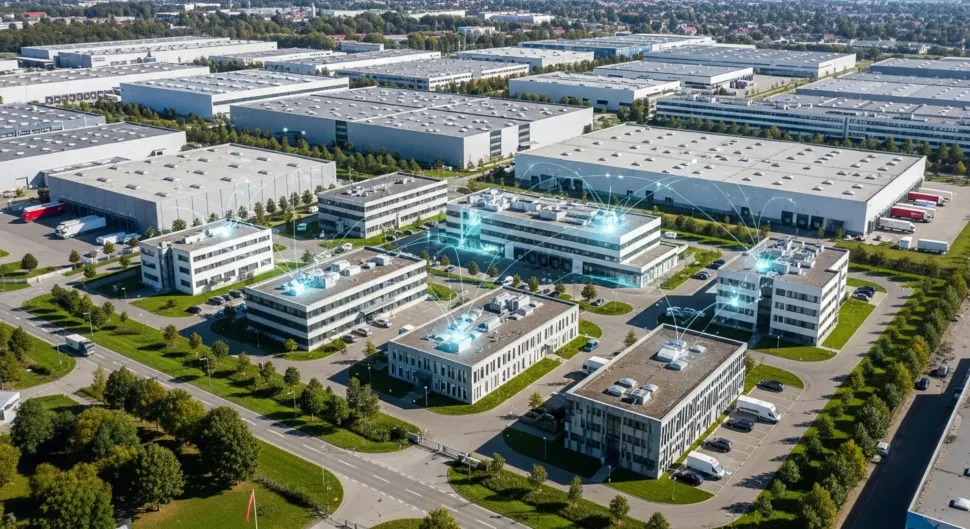
The Human + Machine Paradigm
The idea that machines will replace humans is outdated. The real evolution lies in collaboration between human and artificial intelligence. The Human + Machine model is based on complementarity: machines process, predict, and suggest; humans interpret, decide, and act.
By 2026, advanced factories will use AI systems that work alongside operators. On the shop floor, AI analyzes data from sensors and PLCs in real time, proposing micro-optimizations. In maintenance, it detects anomalies before they become failures. In energy management, it calculates the optimal balance between loads, solar energy, and the grid.
The added value comes from synergy: AI amplifies human expertise and frees up time for higher-impact decisions.
A production manager can anticipate issues rather than react to them. A CIO or CDO can focus on data strategy rather than manual integrations. And for a CEO, AI becomes a lever to build a company culture grounded in objective, data-driven decisions.
This is how AI applied to production transforms traditional factories into true smart factories, improving productivity, quality, and sustainability.
The New Role of the CIO in the AI-Driven Factory
The Chief Information Officer (or Chief Digital Officer) is no longer just the “system custodian” but the architect of digital transformation. In the AI context, their mission is to ensure an open, secure, interoperable data infrastructure that connects the factory, the cloud, and business systems.
By 2026, the CIO’s top priority will be IT/OT integration — connecting machines, ERP, MES, and AI platforms through hybrid edge–cloud architectures. Only then can AI become part of daily decision-making rather than a one-off experimental project.
Sustainability and Digitalization: The Competitive Axis of AI
By 2026, sustainability will no longer be optional — it will be a prerequisite for staying in the market. According to Unioncamere and Politecnico di Milano, 47% of Italian companies define themselves as “green”, investing in energy efficiency, circular economy, and renewables.
AI becomes the bridge between digitalization and sustainability: from energy consumption and material management to automated ESG reporting.
Machine learning and predictive analytics identify inefficiency patterns, estimate self-consumption potential, optimize production around energy peaks, and reduce material waste.
Through integrated dashboards, companies can monitor sustainability and productivity KPIs in one view, cutting costs and environmental impact.
This data-driven approach is what separates a merely digitalized company from a truly intelligent factory. Companies adopting AI-driven models not only improve margins but also strengthen their ESG reputation — a decisive factor in B2B relationships and public procurement.
From Theory to Reality: The Zerynth Industrial AI Copilot Platform
Bringing artificial intelligence into the factory doesn’t mean rebuilding from scratch. It requires a platform that adapts to existing infrastructure, collects machine data, and transforms it into actionable insights.
The Zerynth Industrial AI Copilot Platform was designed with exactly this goal: to make industrial AI concrete, accessible, and measurable — supporting production optimization and guiding companies through the Industry 5.0 transition.
With a plug-and-play approach, the platform connects machines and sensors, analyzes data in real time, and visualizes key indicators across production, energy, and maintenance. Its AI engine detects patterns and anomalies, providing proactive recommendations to reduce downtime, improve energy efficiency, and optimize workflows.
At the same time, native integration with ERP and MES systems delivers a unified plant view — from the production line to the energy balance.
Its double value lies in simplicity and scalability: the platform evolves over time, from monitoring to predictive maintenance, and up to the integration of AI conversational agents like Zero, which provide real-time insights and analysis in natural language.
Looking Beyond 2026
The year 2026 will be remembered as the moment when artificial intelligence moved from slides to production lines.
Italian and European companies that seize this opportunity will build factories that are more efficient, sustainable, and resilient.
The future of the manufacturing industry will be shaped by artificial intelligence, production optimization, and the Industry 5.0 transition — three pillars that will define Europe’s competitiveness over the next decade.
But AI is not a one-time project; it’s a continuous journey requiring governance, training, and a mature data culture.
In the next five years, the boundaries between production, energy, and IT will blur.
AI will become the common language connecting people, machines, and systems.
Those who start today with a strategic, measurable, and collaborative approach will be ready not only for Industry 5.0, but for the Factory of 2030 — intelligent, sustainable, and above all, human.


